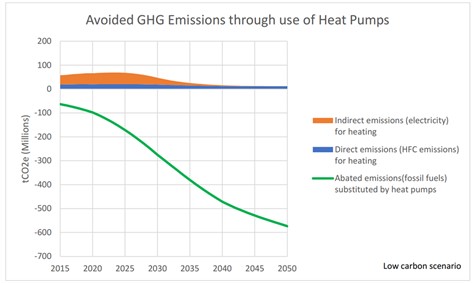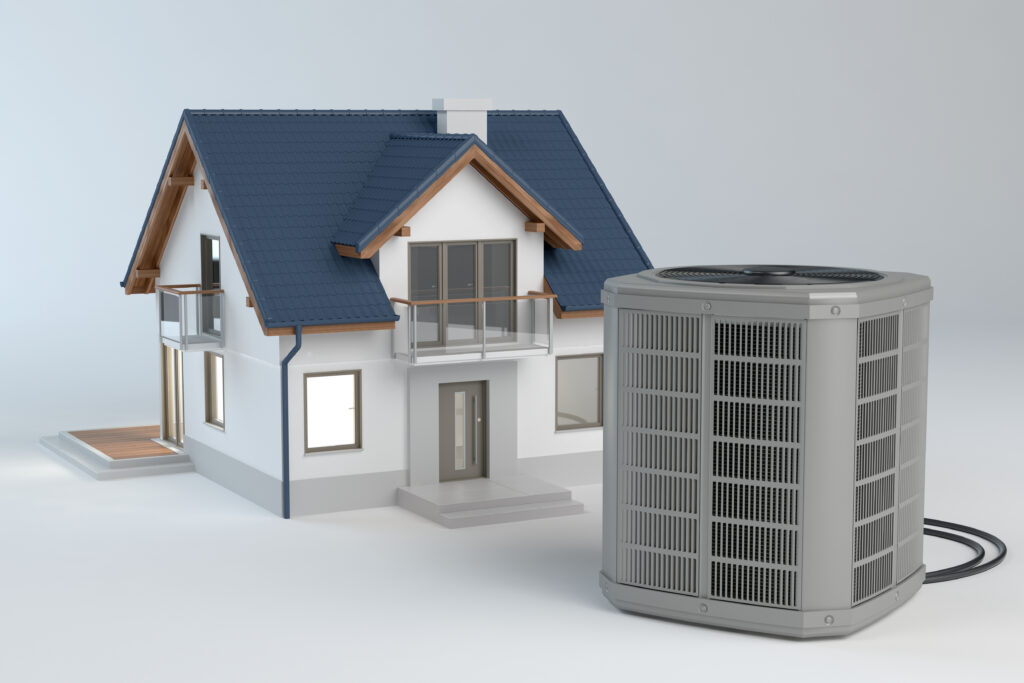Heat Pumps: A future-proof solution for sustainable heating and cooling
As part of the European Green Deal targets, the EU has committed to reach climate neutrality by 2050 and agreed on an emissions reduction trajectory of -55% by 2030. Around 40% of European energy consumption occurs through heating and cooling buildings. This makes the decarbonisation of the heating and cooling sector a key element of Europe’s climate strategy. Heat pumps are vital to enable such transition. They could avoid 570 million tons CO2 emissions of fossil fuel until 2050.

For more information on the graph and its underlying model, please click here
Heat pumps are used in buildings to regulate the temperature, humidity, and purity of the air. The working process for heat pumps is based on the refrigeration cycle. Like a fridge, they extract heat from one place and transfer it to another. When it is cold outside, the pumps transfer the available heat from the cool outdoors inside to warm your house. When it is warm outside, they redirect the heat inside our homes to the exterior.
Some gases that allow the refrigeration cycle to work in a safe and efficient manner are F-Gases, which could be classified as PFAS under REACH. Why? F-Gases possess unique characteristics that enable heat pumps to operate despite the complexity of the parameters that need to be taken into account – mainly harsh climate conditions, containment of flammability and toxicity hazards, and energy efficiency.
Not only are these F-Gases crucial for heat pumps in buildings, they also function in heat pumps for industrial and transport uses. They are also fundamental elements in refrigeration, which among other applications is vital for a safe food supply chain or vaccine production.

